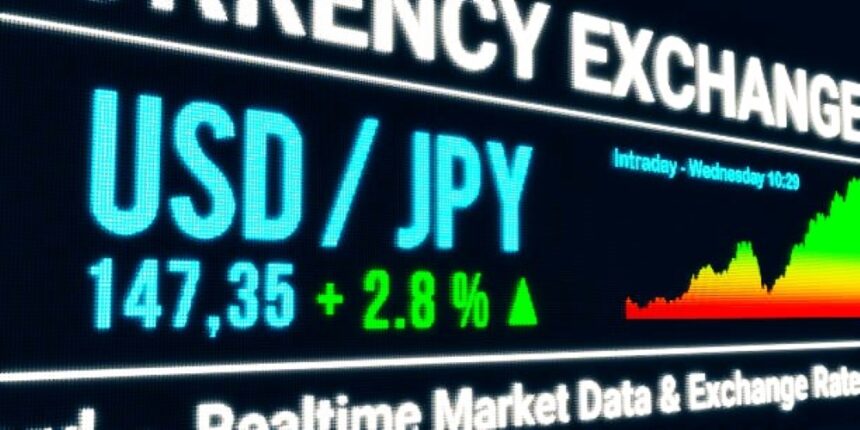Japanese yen falls for the second day in a row, pushed by a variety of factors.
The Japanese yen (JPY) begins the new week on a negative note, Retreating further from a two week high Reached against its American Counterpart on Friday.
The Bank of Japan’s Cautious approach, weaker Domestic statistics, and a positive risk tone all erode the safe-haven JPY.
The Bank of Japan’s (BoJ) dovish language, implying that the next rate hike is some time off, along with a bullish risk tone, continues to erode the safe-haven JPY. Besides this, Softer domestic data, which show that real earnings in Japan decreased in February for the 23rd consecutive month, pushes the JPY lower for the second day in a row.
The US Dollar (USD), on the other hand, remains supported by the positive US jobs report released on Friday, which suggested that the Federal Reserve (Fed) may postpone interest rate cuts. Furthermore, reduced bets on three Fed rate cuts in 2024 support elevated US Treasury bond yields. The resulting widening of the US-Japan rate disparity weighs on the JPY, allowing the USDJPY pair to build on Friday’s rebound from more than a two-week low and return to a multi-decade peak.
That said, the recent jawboning by Japanese officials, demonstrating preparedness to act in the
Markets to support the domestic currency may prevent JPY bears from putting aggressive bets. Investors may also opt to remain on the sidelines ahead of this week’s critical release of the latest US consumer inflation data and FOMC meeting minutes on Wednesday. This, in turn, calls for caution before positioning for a repeat of the recent rally that has occurred over the last four weeks or so.
Daily Market Movers: Japanese Yen continues on the back foot against USD amid diverging BOJ-Fed predictions.
The Japanese Yen fell for the second day in a row on Monday, weighed down by the Bank of Japan’s (BoJ) cautious stance to additional policy tightening and softer wage data from Japan.
The Bank of Japan expressed a dovish tone at the ended the March monetary policy meeting without providing any direction on future measures or the rate of policy normalization.
According to the labor ministry, Japanese workers’ inflation-adjusted real wages decreased by 1.3% in February from a year earlier, compared to a corrected 1.1% decline the previous month.
The Ministry of Finance said that Japan’s current account increased to 2.64 trillion Yen in February, the highest level since October last year, but fell short of consensus predictions.
Reports of progress in Gaza peace talks enhance investor confidence and erode demand for the safe-haven JPY.
Japanese government officials resumed jawboning to defend the native currency, while doing little to impress.
The USDJPY pair returns to its multi-decade high on the back of positive US NFP-inspired USD strength.
The JPY bulls help or hinder the USDJPY pair’s upward movement.
The US Dollar is supported by optimistic US jobs statistics announced on Friday, which caused investors to lower their expectations for a Federal Reserve interest rate drop in June.
The well-known NFP data showed that the US economy added 303K jobs in March, and the unemployment rate fell to 3.8% from 3.9% the previous month.
Meanwhile, the report provides the Fed more reason to be patient, reducing the likelihood of rate cuts this year from three to two, pushing US Treasury bond yields higher.
The market’s emphasis now switches to the announcement of the US consumer inflation numbers for March, which are due on Wednesday, followed by the FOMC meeting minutes.
Investors will seek for more clues on possible Fed rate reduction in 2024 before positioning for the next phase of a directional move for the dollar and the USDJPY pair.









